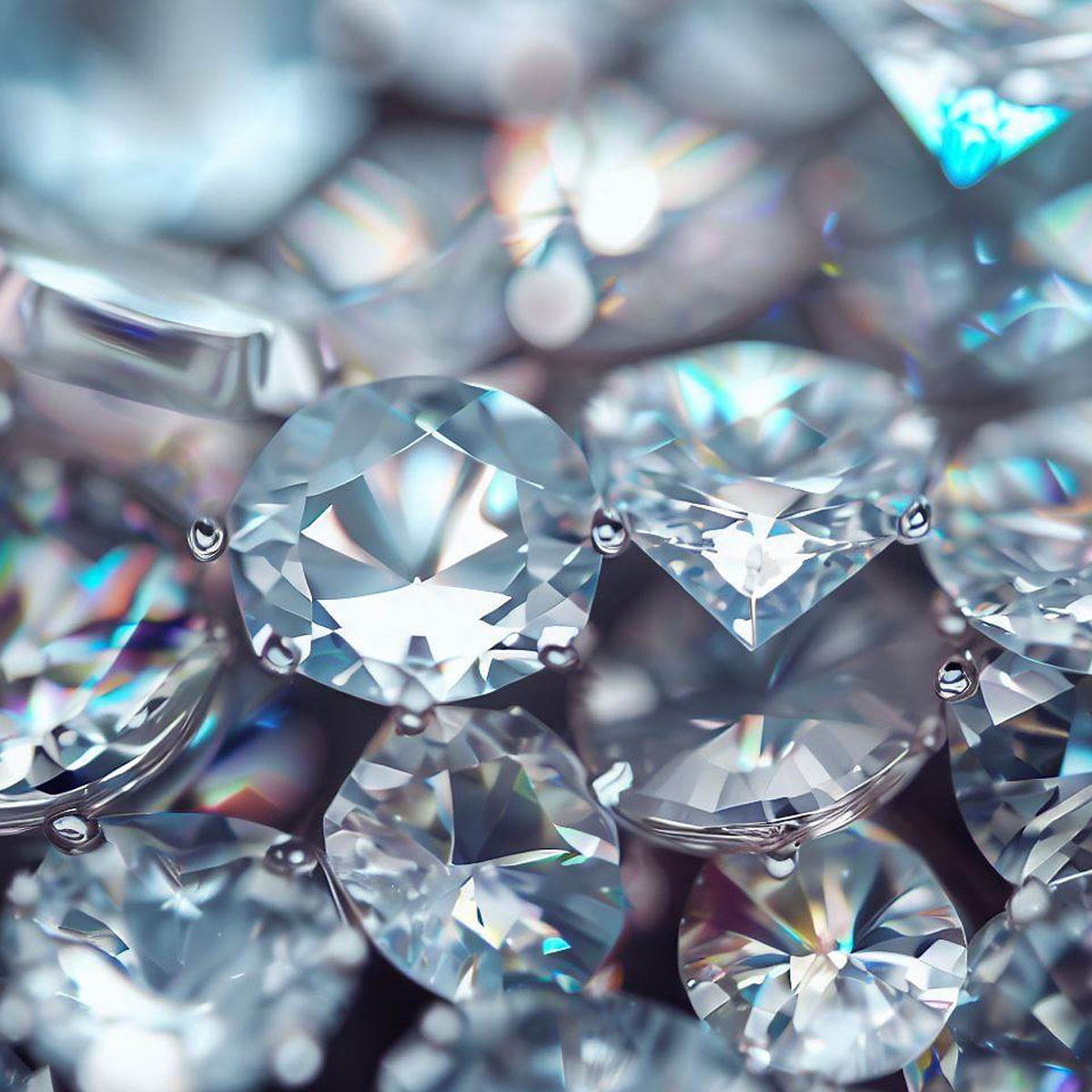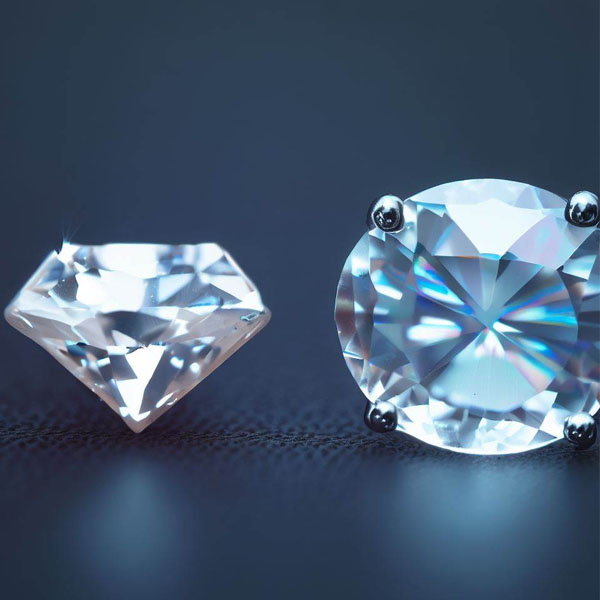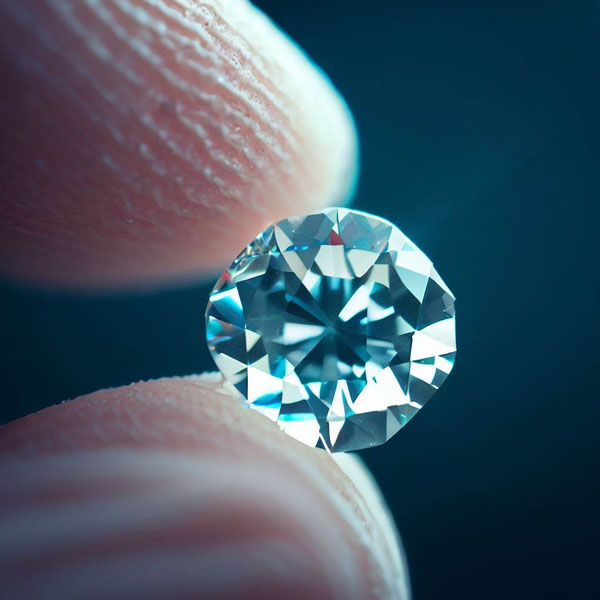Natural vs Lab-Grown Diamonds: Your Ultimate Engagement Ring Guide

Selecting the perfect engagement ring is a momentous decision steeped in love and joy, but it can sometimes feel a little daunting. Our comprehensive guide eases this process, navigating you through the captivating world of natural and lab-grown diamonds. These two alternatives have their unique allure, from the millennia-old charm of natural diamonds to the modern, eco-friendly appeal of lab-grown ones. Our aim is to arm you with the knowledge you need to make an informed decision, ensuring your engagement ring resonates with your personal love story and values.
Understanding Diamond Basics
Before we delve into the world of diamonds, it’s essential to understand the four Cs that define a diamond’s value and appeal: carat, cut, clarity, and colour.
Carat: The weight of the diamond. More carats mean a larger size and higher price.
Cut: This refers to how well the diamond is cut from its raw form. An excellent cut provides unmatched brilliance.
Clarity: This relates to the absence of inclusions or blemishes. The clearer the diamond, the higher its value.
Colour: Diamonds are graded based on their lack of colour. A perfectly colourless diamond is considered top-grade.
Diamond Certification: This guarantees the quality and authenticity of your diamond, graded by independent gemological labs.
Exploring Natural Diamonds
Natural diamonds are millions of years old, formed under extreme heat and pressure conditions deep within the Earth’s mantle. They are excavated from deep mines and then cut and polished to produce the dazzling gems we see in jewellery stores.
Exploring Lab-Grown Diamonds
In recent years, lab-grown diamonds have emerged as a popular alternative to natural diamonds. Born out of modern technology’s brilliance, these diamonds are created in highly controlled laboratory environments. With the use of advanced technological methods like High-Pressure High Temperature (HPHT) or Chemical Vapour Deposition (CVD), scientists can mimic the natural diamond formation conditions, thus growing diamonds that are physically, chemically, and optically identical to their mined counterparts.
Interesting Trivia: The process of creating a lab-grown diamond can be completed in a few weeks, whereas natural diamonds take between one to three billion years to form!
But the appeal of lab-grown diamonds extends beyond their identical qualities to natural diamonds. They come with a host of other benefits. For starters, lab-grown diamonds tend to be more pocket-friendly, costing up to 30%-40% less than natural diamonds. This offers prospective engagement ring buyers the opportunity to own a larger, more brilliant diamond for the same budget.
Moreover, in an era where sustainable and ethical consumption is gaining precedence, lab-grown diamonds present a greener alternative. Their creation process bypasses the environmentally taxing traditional mining process, reducing the impact on our planet.


Comparing Natural and Lab-Grown Diamonds
When faced with the decision between a natural and lab-grown diamond, it might seem challenging given that the quality and durability of both options are virtually identical. The real differentiation comes when one considers the price, ethical sourcing, and individual values.
While natural diamonds hold a certain timeless charm and rarity, their extraction process can have severe environmental and socio-economic implications. On the other hand, lab-grown diamonds, with their eco-friendly and conflict-free nature, seem to resonate more with modern consumers. The reduced price point is an added advantage.
Remember, whether you choose a natural diamond for its centuries-old allure or a lab-grown one for its modern appeal, both are symbols of love and commitment.
Choosing the Perfect Ring: Factors to Consider
Choosing the perfect engagement ring involves more than just deciding between a natural and lab-grown diamond. You must also consider the style, setting, metal, and personalisation options.
From the classic solitaire setting to the more elaborate halo or pavé settings, the choice is vast. Similarly, metal options range from traditional yellow gold to chic rose gold, elegant white gold, and durable platinum.
At Smith Green Jewellers, one of the finest Hatton Garden Jewellers, the staff can help guide you through these choices. They will help you understand the various factors, including the diamond’s cut, clarity, carat, colour, and certification, while also showcasing different styles and designs to suit your preference.
Practical Considerations
After choosing your perfect diamond and ring design, there are still a few practical aspects to consider. Getting the correct ring size is crucial for comfort and security. You may also want to consider insuring your engagement ring to protect your investment against loss, theft, or damage.
Remember, purchasing an engagement ring is a significant decision, so take your time and don’t rush. At Smith Green Jewellers, they understand this and provide a relaxed, no-pressure environment where you can make an informed decision.
Conclusion
Choosing between a natural and a lab-grown diamond engagement ring ultimately comes down to personal preference, values, and budget. Whichever you choose, the most important thing is that it resonates with you and your love story.

